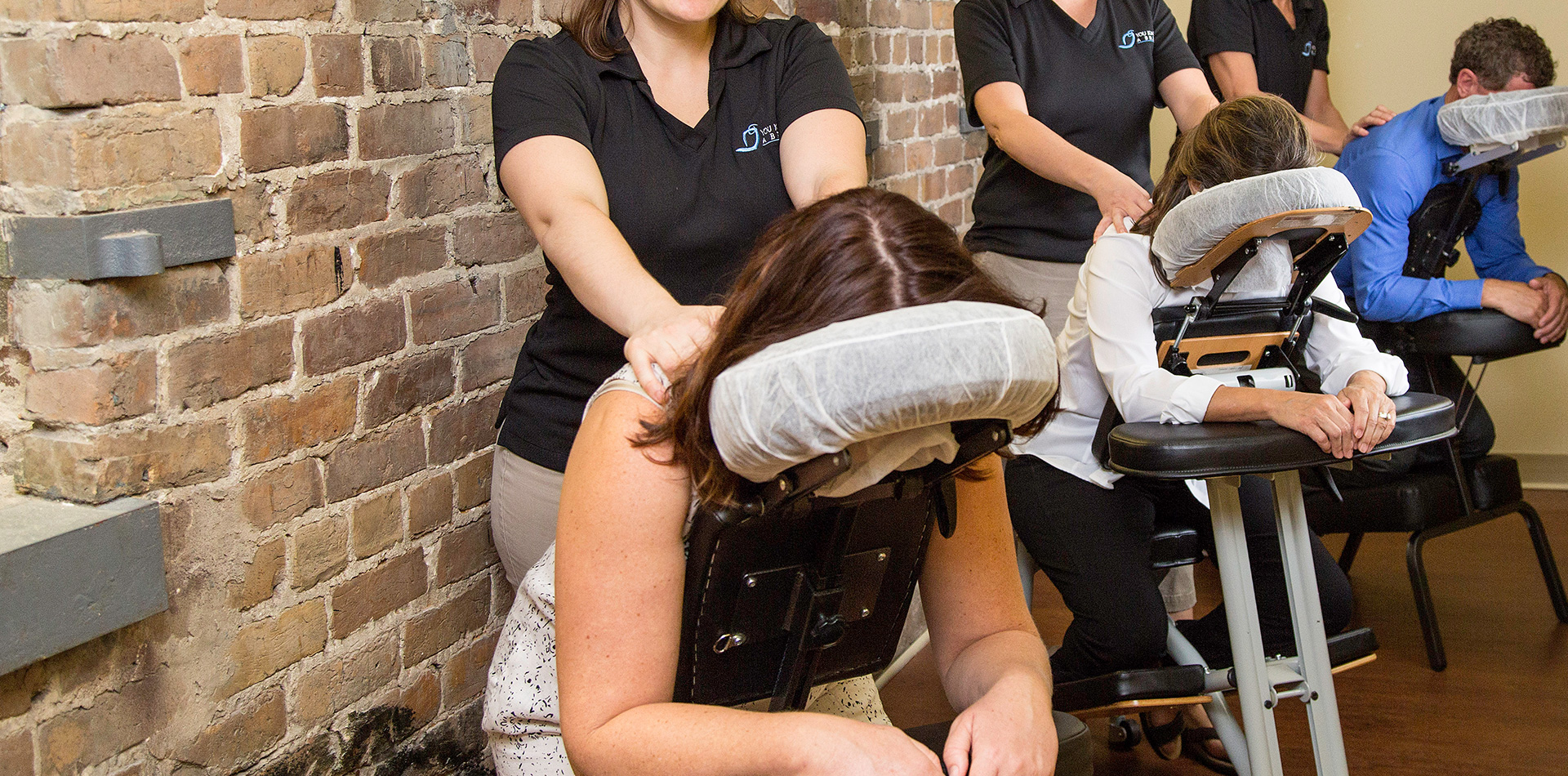Basically chair massage offers mental health benefits and physical health benefits. Mental Health Benefits. Massages can help with a wide range of mental health issues, especially those related to stress. Relieving stress and reducing anxiety are two of the key benefits a massage can offer you. Massages can also alleviate fatigue, making massages ideal for those with stressful, repetitive jobs. Massage is generally considered part of complementary and alternative medicine. It can work in conjunction with standard treatment for a wide range of medical conditions and situations. Studies of the benefits of massage demonstrate that it is an effective treatment for reducing stress, pain and muscle tension.
What is a chair massage?
A chair massage is a 15-20 minute massage that focuses on the high-tension areas of the neck, back, shoulders, arms and hands. Chair massage is performed on an ergonomically designed portable massage chair. You sit on the massage chair facing forward, with your head in a face rest. You Knead a Break massage therapists want to help your company keep its competitive edge by ensuring the well-being and health of your employees.
Measurable Benefits for Employees
- Relieves stress and fatigue
- Lowers anxiety and hostility
- Enhances creative thinking
- Strengthens Immunity
- Helps Prevent Repetitive Stress Injuries
- Lowers Muscle Tension and Pain
Measurable Benefits for Companies
- Increases Employee Retention
- Improves Productivity
- Enriches corporate culture
- Decreases Absenteeism
- Improves Job Satisfaction
- Improves overall company Health
Did you know?
- Research indicates that a 15-minute chair massage results in decreased job stress, increased alertness and increased speed & accuracy on math computations. (1)>
- Office workers massaged regularly were more alert, performed better and were less stressed than those who weren't massaged. (1)
- Up to 90% of all visits to primary care physicians are for stress-related complaints. (2)
- Stress accounts for $26 billion in medical and disability payments and $95 billion in lost productivity per year. (2)
- Over 50% of lost work days are stress related which keeps about 1 million people per day from attending work. (2)
- Health care expenditures are nearly 50% greater for workers who report high levels of stress. (3)
- 40% of job turnover is due to stress. (4)
(1) Field, Ironson, Pickens et al. (1996). Massage therapy reduces anxiety and enhances EEG pattern of alertness and math computations. International Journal of Neuroscience 86, 197-205
(2) Occupational Health and Safety new s and the National Council on compensation Insurance (USA)
(3) Journal of Occupational and Environmental Medicine; 4American Institute of Stress
Despite these benefits, massage is not meant as a replacement for regular medical care.

